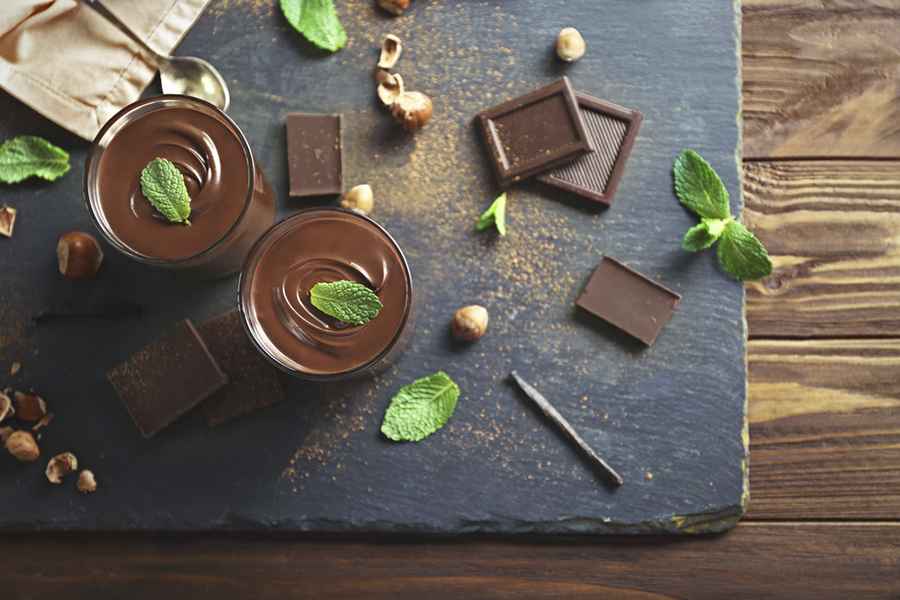Behind Closed Doors: Inside the Kitchens of World-Class Food Manufacturers
Imagine stepping inside the bustling kitchens of the world's top food manufacturers, where the art of food creation transforms into a symphony of flavors and techniques. This isn't your typical restaurant visit; it's an exclusive tour into the heart of culinary production that shapes what we eat at the world's finest tables. From the kneading of dough to the precise science of flavor extraction, these kitchens are the unsung heroes of the culinary world. Join us as we unveil the secrets of these gastronomic giants through a vivid exploration.

The Art of Crafting Chocolate: A Journey from Bean to Bar
Our first stop takes us to Belgium, renowned for its rich, indulgent chocolate. Here, master chocolatiers combine ancient techniques with modern technology to transform humble cocoa beans into luxurious chocolate bars. The process begins in the tropical climates where cocoa beans are carefully harvested and fermented to develop their full potential. Transported to massive, pristine facilities in Belgium, these beans are roasted to perfection.
The air is rich with the aroma of cocoa as skilled workers oversee the grinding and conching process, where cocoa solids are refined with sugar and milk to produce smooth, velvety chocolate. The attention to detail is meticulous; temperature and timing are meticulously managed to achieve the perfect texture and taste. Observing the chocolatiers, one appreciates the blend of tradition and innovation that makes Belgian chocolate a staple in luxury desserts across the globe.
The Mastery of Pasta: From Flour to Plate
Venturing further into Europe, we enter Italy, where pasta is not just food but a cultural heritage. In a vast factory in Tuscany, machines and artisans work in harmony to create pasta that’s revered around the world. The process starts with the finest durum wheat, milled into semolina flour, which is the foundation of good pasta. Water is the only other ingredient mixed into the flour to form a dough that is both simple and complex in its requirements.
As the dough is extruded through traditional bronze dies, it takes on various shapes, from spaghetti to rigatoni. These forms are then dried slowly at low temperatures to preserve the texture and integrity of the pasta. Here, in these expansive halls filled with the earthy scent of wheat, every batch of pasta is a testament to the craft that goes into producing quality products that grace dinner tables and fine dining establishments globally, always retaining the essence of European cuisine.
Brewing Innovation: The Science Behind Your Favorite Beverages
Our journey takes a refreshing turn as we visit a modern beverage manufacturing facility in Germany. This segment of the industry combines age-old brewing techniques with cutting-edge technology to ensure consistency and quality in every bottle. Inside the facility, the air buzzes with energy as stainless steel vats and high-tech machinery hum in operation. Skilled technicians monitor every stage of production, from fermentation to bottling, ensuring that each product meets stringent quality standards.
This location doesn’t just produce alcoholic beverages. It’s also home to a variety of non-alcoholic drinks that cater to a global market. Here, a beverage manufacturer takes the heavy lifting out of it for these restaurants, allowing them to focus on other things like menu design and customer service. The precision and scale of operation are impressive, demonstrating a commitment to excellence that defines the modern beverage industry.
The Cheese Chronicles: Age-Old Processes Meet Modern Demand
Crossing over to France, we delve into the art of cheese making, a craft steeped in history yet vibrant and evolving. In a sprawling complex nestled in the French countryside, the process of turning milk into cheese is both a science and a tradition. Vast vats of fresh, local milk start the transformation under the watchful eyes of fromagers who have inherited methods and recipes that are centuries old.
In these cool, aromatic rooms, the cheese is aged. Some varieties rest for a few weeks, others for several years. The aging rooms are a sensory overload, with row upon row of cheese wheels carefully tended to develop their unique flavors and textures. Each cheese tells a story of its region, its climate, and its heritage. As we explore these rooms, it's clear that despite the modern equipment that regulates temperature and humidity, the soul of French cheese remains rooted in its traditional past.
The Secret Behind Sauces: Crafting Flavors to Conquer the World
Our final stop brings us to the United States, where a giant in sauce manufacturing blends spices and ingredients from around the world to create products that are staples in kitchens everywhere. In this high-tech environment, precise measurements and timing are crucial. Ingredients are sourced globally and chosen for their quality and flavor contribution.
Massive mixers combine tomatoes, herbs, and spices, watched over by culinary experts who ensure the balance is just right. The sauce is then cooked at controlled temperatures to deepen the flavors before being rapidly cooled and packaged in airtight containers, ready to be shipped out. This segment of the food manufacturing world is particularly fascinating, revealing how diverse global flavors are meticulously combined to produce consistently delicious products that bring a touch of gourmet to everyday meals.
From the aromatic depths of Belgian chocolate factories to the bustling sauce production lines in the U.S., the world of food manufacturing is a realm of endless innovation and steadfast tradition. It's a sector where every detail matters, and every flavor tells a story. These tours behind the doors of the world's leading food manufacturers have not only showcased the intricate processes involved in creating some of our most beloved foods but also highlighted the global interconnections that bring diverse culinary experiences to our tables. As travelers and food lovers, we gain a new appreciation for the journey from raw ingredients to finished products, a journey that is as rich and varied as the foods themselves.
Image credit: Depositphotos